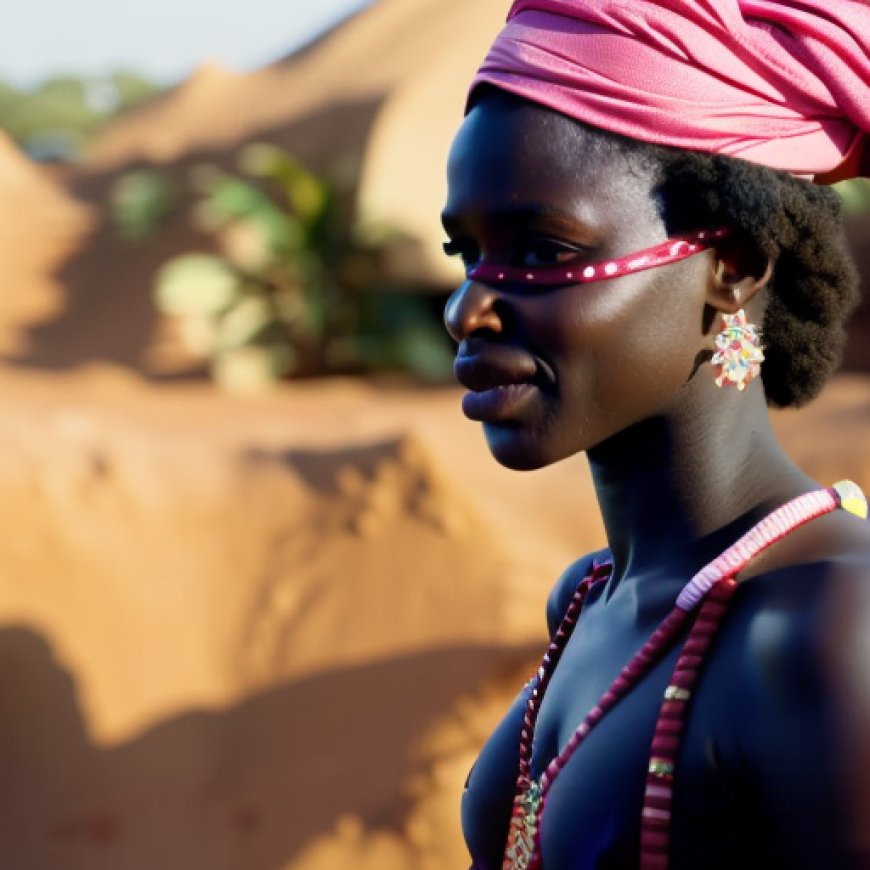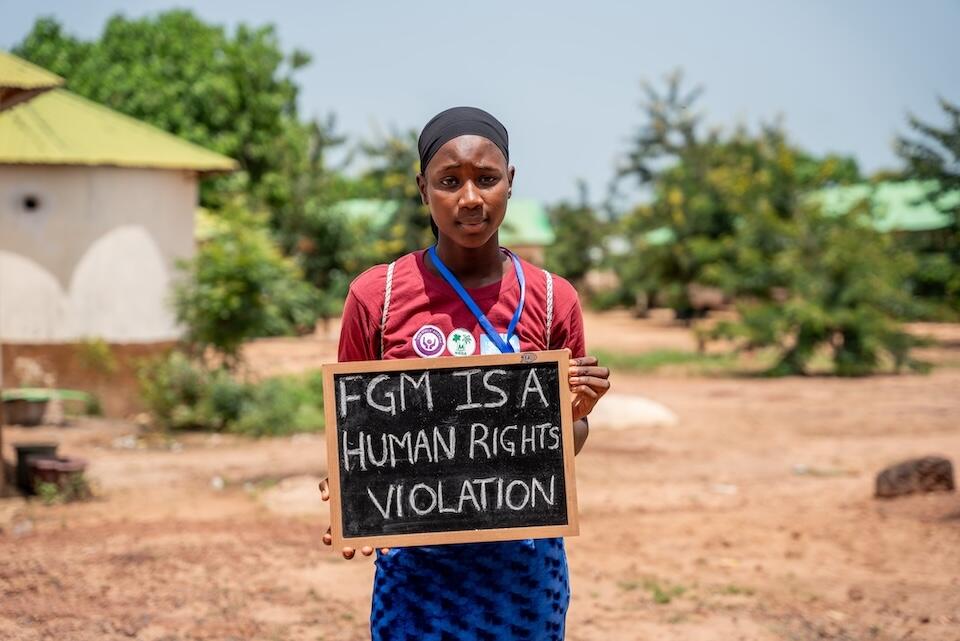Keeping Girls in The Gambia Safe From FGM
Keeping Girls in The Gambia Safe From FGM UNICEF USA


The fight against FGM aims to protect girls’ bodies and their futures
Over 230 million girls and women worldwide have undergone some form of female genital mutilation (FGM), an excruciating and unnecessary practice most often carried out on girls between infancy and age 15. In many countries, communities are moving towards abandoning FGM, which harms girls and women physically and psychologically, but progress is slow and hard-won.
In 2015, The Gambia took a bold step by criminalizing FGM, setting a global precedent for progressive legislation. Conservative religious leaders are now challenging this law, despite the fact that there is no authentic reference to FGM in Islam and it is not practiced by the majority of Muslims worldwide, including the population of Saudi Arabia. This pushback is fueled by deep-seated social norms, perpetuated by fear of judgment and ostracism.
Tensions escalated in August 2023, when three women became the first Gambians to be fined for performing FGM. Imam Faty, an Islamic cleric, controversially raised funds to pay the fines, igniting further discussion. In March 2024, a National Assembly Member introduced a bill to overturn the ban, endangering girls once more. Public opinion varies, with some supporting repeal for cultural or religious reasons, while others oppose it due to health risks and human rights concerns. Political debates within the Assembly reflect diverse opinions influenced by constituencies, personal beliefs and understanding of the issue.
A debate on the report to be submitted by a National Assembly Committee and a vote by National Assembly Members — almost all of whom are men — are expected to take place in June. If the bill passes, The Gambia will become the first country ever to repeal a ban on FGM.
UNICEF USA recently met with Nafisa Binte Shafique, UNICEF Representative in The Gambia, to learn more about UNICEF’s efforts to protect girls and highlight the dangers of FGM. It’s crucial that FGM remain illegal, as it poses severe physical, mental and social risks to girls and women.

Q: Despite the criminalization of FGM, 73 percent of Gambian girls and women between the ages of 15 and 49 have been subjected to this cruel practice. It’s a severe violation of their human rights. How is UNICEF working to educate Gambians about the dangers of FGM?
NAFISA BINTE SHAFIQUE: First of all, thanks for your interest in The Gambia, particularly regarding the recent debate about the FGM situation in the country. FGM has been practiced in The Gambia and many other countries in the world, and it is significantly harmful. It derives from socio-cultural norms and prejudices. From our experience, we know addressing any social norm takes time. Evidence suggests the FGM rate has decreased slightly over the past few years and some progress is being seen in the younger population, from 56 percent in 2010 to 50 percent in 2018 among girls from 0 to 14 years old, and from 38 percent in 2010 to 27 percent in 2018 among girls 0 to 4.
This progress is not satisfactory, and there is still a lot of work to be done, and acceleration to be achieved. We have recognized that while the concept of human and child rights is crucial, it isn’t always readily accepted or even comprehended by communities and traditional leaders. So we are approaching this issue from additional perspectives, such as health. This is a compelling argument, supported by scientific evidence showing that FGM is a harmful traditional practice with negative health implications. From a health perspective, there are absolutely no benefits of FGM. The UN has gathered ample evidence through significant research, and there is not a single scientific study demonstrating any health benefit for girls and women.
From a health perspective, there are absolutely no benefits of FGM. The UN has gathered ample evidence through significant research, and there is not a single scientific study demonstrating any health benefit for girls and women.
Studies have shown that FGM leads to fistula, infertility, difficult delivery, and maternal and child deaths. We hear discussions from different stakeholders who have proposed a middle ground of medicalizing the FGM procedure or making it a matter of choice after the age of 18. In my opinion, the fragile and overloaded health care system in The Gambia struggles to provide basic health care to all citizens with adequate quality. Given that FGM has no benefit, it does not warrant medicalization. Furthermore, despite The Gambia ratifying the UNCRC, CEDAW and the Maputo Protocol, and the country’s constitution mentioning the protection of the rights of girls and women, concerns about protecting their health and well-being persist as a challenge.
There is also no authentic religious literature that suggests FGM as a mandatory or even optional practice. While male circumcision is mandated, FGM has no basis in any religion, including Islam. This practice originated in pre-Islamic times, possibly from Pharaonic culture. However, at a later stage, when Islam was introduced, the cultural practice was mistakenly labelled as a religious practice. Despite lacking authentic religious justification, it persisted and became ingrained as a social norm, widely practiced by communities. Therefore, there is
SDGs, Targets, and Indicators
| SDGs | Targets | Indicators | ||||
|---|---|---|---|---|---|---|
| SDG 5: Gender Equality | Target 5.3: Eliminate all harmful practices, such as child, early, and forced marriage and female genital mutilation | Indicator 5.3.1: Proportion of women aged 20-24 years who were married or in a union before age 18 | Indicator 5.3.2: Proportion of girls and women aged 15-49 years who have undergone female genital mutilation/cutting, by age group | |||
| SDG 3: Good Health and Well-being | Target 3.4: By 2030, reduce by one-third premature mortality from non-communicable diseases through prevention and treatment and promote mental health and well-being | Indicator 3.4.1: Mortality rate attributed to cardiovascular disease, cancer, diabetes, or chronic respiratory disease | Indicator 3.4.2: Suicide mortality rate | Indicator 3.4.3: Mortality rate attributed to alcohol consumption | Indicator 3.4.4: Percentage of population with depressive symptoms | Indicator 3.4.5: Percentage of population with mental disorders |
| SDG 16: Peace, Justice, and Strong Institutions | Target 16.3: Promote the rule of law at the national and international levels and ensure equal access to justice for all | Indicator 16.3.1: Proportion of victims of violence in the previous 12 months who reported their victimization to competent authorities or other officially recognized mechanisms | Indicator 16.3.2: Unsentenced detainees as a proportion of overall prison population |
1. Which SDGs are addressed or connected to the issues highlighted in the article?
- SDG 5: Gender Equality
- SDG 3: Good Health and Well-being
- SDG 16: Peace, Justice, and Strong Institutions
2. What specific targets under those SDGs can be identified based on the article’s content?
- Target 5.3: Eliminate all harmful practices, such as child, early, and forced marriage and female genital mutilation
- Target 3.4: By 2030, reduce by one-third premature mortality from non-communicable diseases through prevention and treatment and promote mental health and well-being
- Target 16.3: Promote the rule of law at the national and international levels and ensure equal access to justice for all
3. Are there any indicators mentioned or implied in the article that can be used to measure progress towards the identified targets?
- Indicator 5.3.2: Proportion of girls and women aged 15-49 years who have undergone female genital mutilation/cutting, by age group
- Indicator 3.4.1: Mortality rate attributed to cardiovascular disease, cancer, diabetes, or chronic respiratory disease
- Indicator 3.4.2: Suicide mortality rate
- Indicator 16.3.1: Proportion of victims of violence in the previous 12 months who reported their victimization to competent authorities or other officially recognized mechanisms
- Indicator 16.3.2: Unsentenced detainees as a proportion of overall prison population
4. SDGs, Targets, and Indicators
| SDGs | Targets | Indicators | |
|---|---|---|---|
| SDG 5: Gender Equality | Target 5.3: Eliminate all harmful practices, such as child, early, and forced marriage and female genital mutilation | Indicator 5.3.2: Proportion of girls and women aged 15-49 years who have undergone female genital mutilation/cutting, by age group | |
| SDG 3: Good Health and Well-being | Target 3.4: By 2030, reduce by one-third premature mortality from non-communicable diseases through prevention and treatment and promote mental health and well-being | Indicator 3.4.1: Mortality rate attributed to cardiovascular disease, cancer, diabetes, or chronic respiratory disease | Indicator 3.4.2: Suicide mortality rate |
| SDG 16: Peace, Justice, and Strong Institutions | Target 16.3: Promote the rule of law at the national and international levels and ensure equal access to justice for all | Indicator 16.3.1: Proportion of victims of violence in the previous 12 months who reported their victimization to competent authorities or other officially recognized mechanisms | Indicator 16.3.2: Unsentenced detainees as a proportion of overall prison population |
Copyright: Dive into this article, curated with care by SDG Investors Inc. Our advanced AI technology searches through vast amounts of data to spotlight how we are all moving forward with the Sustainable Development Goals. While we own the rights to this content, we invite you to share it to help spread knowledge and spark action on the SDGs.
Fuente: unicefusa.org

Join us, as fellow seekers of change, on a transformative journey at https://sdgtalks.ai/welcome, where you can become a member and actively contribute to shaping a brighter future.







